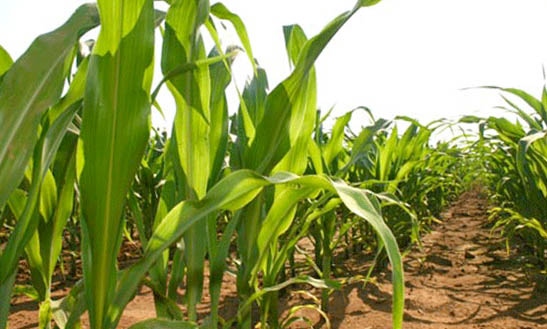February 10, 2011

The potential for China to become a regular importer of U.S. corn, as well as market opportunities for U.S. distiller's dried grains with solubles (DDGS) in China, were key segments of a trade mission National Corn Growers Association leadership participated in last week with the U.S. Grains Council.
"China and its potential market development have always been exciting, but there has always been a sense that corn imports are a few years out," said Rick Tolman, CEO of the National Corn Growers Association. "What we heard on this trip, however, is that there is real opportunity now."
Tolman, as well as NCGA President Bart Schott and First Vice-President Garry Niemeyer, joined Council officers and farmer leaders on the Council's Officer's Mission to Asia.
Traders and industry experts in China told the group that China is short 10 to 15 million metric tons (394-590 million bushels) in corn stocks and may need to purchase corn this year, perhaps as much as 3 to 9 million tons (118-354 million bushels). Even on the low end, that would be a sizeable increase from 2010 imports, which totaled nearly 1.5 million tons (59 million bushels) of U.S. corn.
"The Chinese want to import corn, but they understand it will affect the trade and their market," Schott said. "Being on this mission with the Council was positive because Chinese buyers want to know us on a personal level. They realize we are interested in the growth of their markets."
While in China, those on the Officer's Mission also discussed DDGS, including issues surrounding China's anti-dumping investigation against imports of U.S. DDGS.
In addition to meeting with importers and industry analysts, the group met with China's Ministry of Finance and Commerce and its Bureau of Fair Trade — organizations which are overseeing the anti-dumping investigation.
"DDGS is popular in China. In some ways it seems the anti-dumping investigation is a way for the Chinese to get to know the buyers, to check out their financial condition," said Schott. "In the end, though, it was quite clear that the Chinese want to import U.S. corn and DDGS."
Tolman said analysts and importers in China believe DDGS imports could reach 10 million tons in the next few years, compared to an estimated 3 million tons imported in 2010. "We are hopeful the anti-dumping case moves appropriately through the process, but in the end, trade can continue unimpeded so Chinese importers have access to a reliable supply of DDGS, a quality feed product," he said.
You May Also Like




